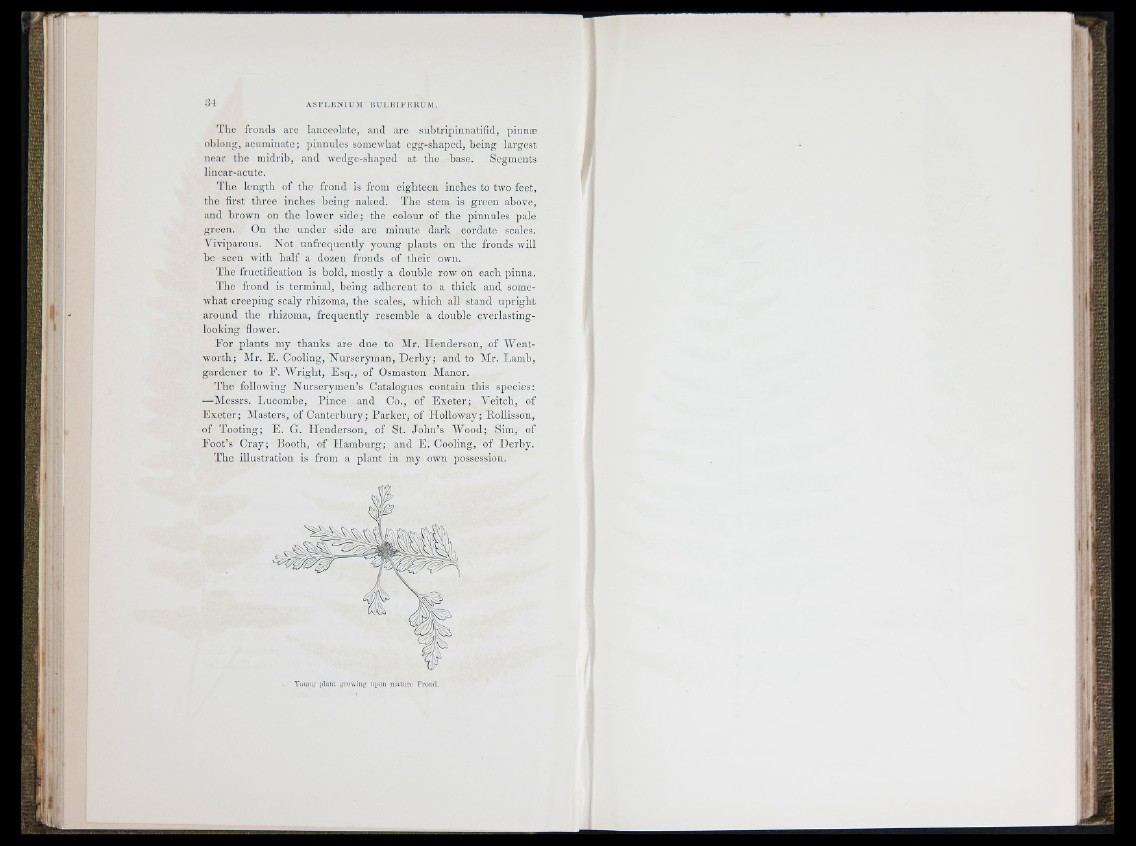
'l’hc fronds arc lanceolate, and are subtrijiinnatifid, ^dunæ
oblong, acuminate; ¡»innnlcs somewhat egg-shaped, being largest
near the midrib, and wedge-sliaped at the base. Segments
lincar-acutc.
Tlie length of the frond is from eighteen inches to two feet,
the first three inches being naked. The stem is green above,
and brown on the lower side; the colour of the pinnules pale
green. On the under side are minute dark cordate scales.
ATvipai'ous. Not unfrequently young plants on the fronds will
bo seen with half a dozen fronds of their own.
T'he fructification is bold, mostly a double row on each iiinna.
The frond is terminal, being adherent to a thick and somewhat
creeping scaly rhizoma, the scales, which all stand upright
around the rhizoma, frequently resemble a double everlasting-
looking flower.
For plants my thanks are due to Mr. Henderson, of Wentworth;
Mr. E. Cooling, Nurseryman, Derby; and to Mr. Lamb,
gardener to E. AATight, Esq., of Osmaston Manor.
The following Nurserymen’s Catalogues contain this sjtecies:
—Messrs. Lucombe, Pince and Co., of Exeter; Veitch, of
Exeter; Masters, of Canterbury; Parker, of Holloway; Rollisson,
of Tooting; E. G. Henderson, of St. John’s AVood; Sim, of
Eoot’s Cray; Booth, of Hamburg; and E. Cooling, of Derby.
The illustration is from a plant in my own 2 >ossession.